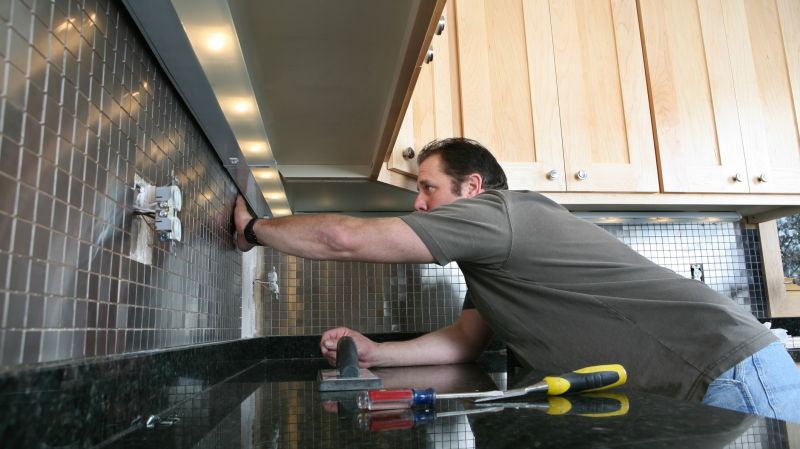Why Do We Keep Renovating Our Homes?
People are caught between seeing their houses as private sanctuaries and market-friendly showcases. The reno industry isn’t helping

The home renovation market is like the commercial incarnation of Hotel California: seductively easy to enter, impossible to leave.
Collectively, Canadians spend some $55 billion a year and angst-filled weeks and months remodelling their homes, and for some the job will never end. It’s a desire cultivated by an ecosystem of television shows, influencers and big box retailers that pump out one message: You can’t be trusted to know how best to remodel your valuable home. We’re the experts; trust us.
North Americans have largely bought into this message, says Annetta Grant, MSc'12, PhD'17, an assistant professor of markets, innovation and design at Bucknell University in Pennsylvania. Since completing her PhD at Smith School of Business under the supervision of associate professor of marketing Jay Handelman, Grant has researched the disorienting change in the way the home is viewed. Is it our private sanctuary that reflects who we are? Or our most valuable asset that must be continually updated to market standards, with our personal stamp erased?
For her study with Handelman, Grant conducted ethnographic interviews with 17 homeowners and four service providers in two Canadian cities. They then coded the interview transcripts to identify common patterns among the observations. Smith Business Insight reached out to Grant to find out what they learned.
Smith Business Insight: What drew you to this darker interpretation of the home renovation market?
Annetta Grant: Before coming to Queen’s, I had several experiences that were influential. For one, I’d spent some time backpacking in Central and South America. During that time, I did a couple of family stays and had a first-hand view of how families planned their homes. These were generational homes that were largely left as they were originally built.
Then, before starting my doctoral studies, I worked as a marketing professional in Calgary. It was during the oil boom in the mid-2000s, and it seemed everyone and their brother were renovating their homes. I would watch as people would rip out a five-year-old kitchen and replace it with a new one, even though the existing kitchen was fully functional. This type of consumption behaviour was in stark contrast to what I had seen in my travels.
I was curious to know what drove consumers to engage in this type of consumption, where they replaced seemingly functional products with brand new ones. And from Jay, I learned some theories and methodologies to critically engage with these questions.
Could this constant renovation merely reflect a desire to keep up with the Joneses?
When Jay and I first went into this research, it was easy to think homeowners were trying to keep up with the Joneses. A lot of people would reference the idea that they didn’t want to be that house on the block.
We saw this attitude for parts of the home that are more visible to visitors such as kitchens. For example, people we interviewed would say they didn’t want to have the book club over to their house because their kitchen was the least nice out of all the people in the club. So homeowners were embarrassed when they compared their homes to others.
But we knew we were onto something when we saw this happening not only in parts of the home that were highly visible to visitors but also parts that only the homeowner could see. One example was a couple deciding to renovate their master bathroom. Only the couple used it, not even their kids. They needed to renovate it to magazine standards, and, in fact, they did a renovation and weren’t happy with it. They ended up redoing a major part of it, bringing the total cost to 150 per cent of their budget, for a room that no one else could see.
You've written about how the "market-reflected gaze" undermines homeowners' confidence in their own judgment. Can you explain?
The market-reflected gaze emerged from studying the media context in home renovations. Have you ever watched any of these home renovation shows? The shaming of the homeowner is usually a feature of the show. In a typical episode, a camera crew will walk through a home, usually with the show host, pointing out everything that’s wrong with the decor.
 iStock/Giselleflissak
iStock/Giselleflissak
It’s not only the show hosts, who you would assume have some level of expertise, scrutinizing what’s going on in the home. Regular homeowners or potential future homeowners also go through and point out everything that’s wrong. Suddenly, we now have people who don’t have any expertise criticizing and scrutinizing and judging and shaming what people have done with their homes. The message conveyed to homeowners is that anyone at any time who comes into your house is looking at it with this critical eye.
We characterized this as an ever-present gaze that’s ready to scrutinize and judge what you’re doing with your home. This gaze is ever present in people’s minds when they’re making renovation decisions. It creates a sense of unease and disorientation that, our study found, creates the impetus for home renovations. It also makes the home renovation process quite stressful for consumers.
And people don’t realize what’s making them uneasy or stressed out?
I think back to an interview with one of our homeowners who was trying to decide how to configure the tiles behind her stovetop. It was a relatively small decision; they were installing nine tiles. She really struggled to decide which tiles to use and how to orient them. She asked her sister-in-law, who was an interior designer. She asked the contractor. She asked her electrician. At one point, she turned to me and asked, “Well, what do you think?”
She ended up ordering custom-designed tiles, inspired from a Pinterest page.
You could say that was how she put a personal stamp on her kitchen decor.
Absolutely, and that in part is what played into such a high level of unease with making a decision. She was deviating from what she had seen on Pinterest, and the market hadn’t put its stamp of approval on it. As a result, she had less confidence and more unease about her decision.
This speaks to the constant tension between needing to maintain the asset value of one’s home, aligned with the needs of the marketplace, and the desire for the home to be a reflection of who people are. It’s an underlying tension that never quite seems to go away.

Did you observe any homeowners trying to exert their independence?
We found that people engaged in some forms of mini-protest, where they might renovate most of their home to the standards of the market but save a little bathroom off the corner where they go wild and crazy. By going wild and crazy, I mean the bathroom pretty much looks like a magazine except it has some stained glass or a colourful sink that might be more unique to their identity or a place that they travelled to—something that’s meaningful to them.
Home renovation businesses certainly seem to benefit from these consumer insecurities. Is there any message from your research that they should heed?
Firms can help celebrate their consumers’ expressions of uniqueness in their home. They could, for example, create platforms like an online forum where consumers’ expression of uniqueness is celebrated rather than admonished. Firms that align their offerings with celebrations of uniqueness may find greater market opportunity for their products and services.
Businesses can also recognize the tension consumers face between wanting to adhere to the marketplace but also wanting to express their unique identity. That includes the broad range of market intermediaries, such as interior designers, contractors, electricians, painters and the folks who work in home renovation-oriented stores.
These intermediaries are embedded in the market and tend to have a good grasp of market trends and what people are doing with their homes. They’re less tuned into the fact that consumers also have needs for individual uniqueness within their home. By understanding this tension, they can better guide how homeowners can configure the home in a way that both meets the needs of the market and speaks to the needs of consumers.